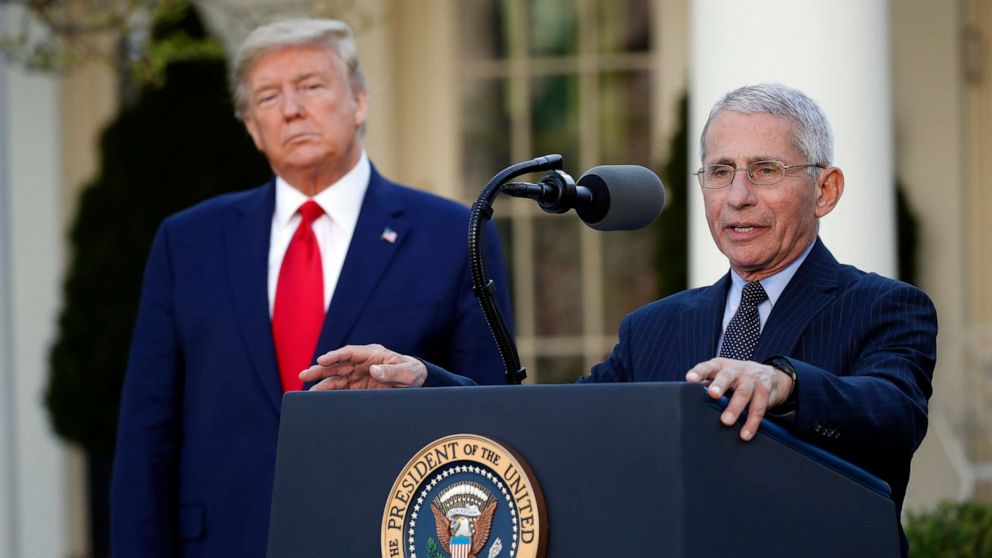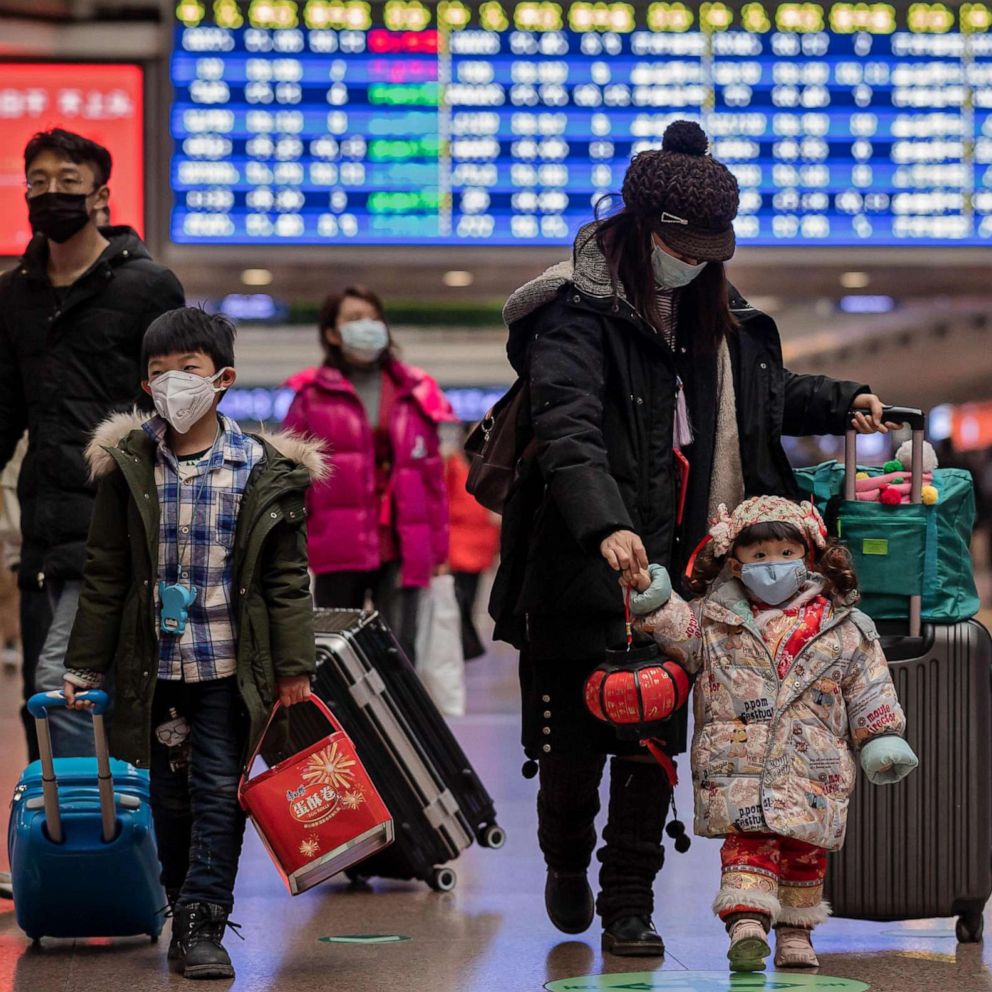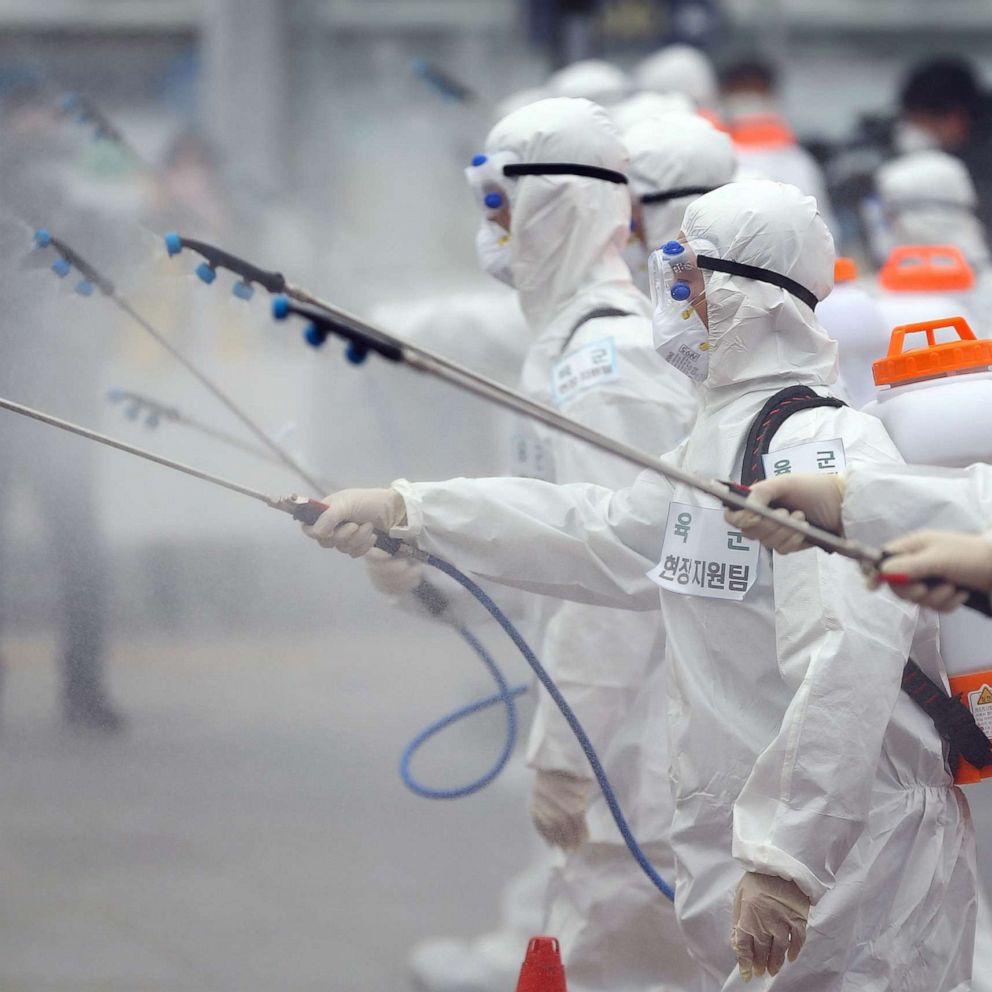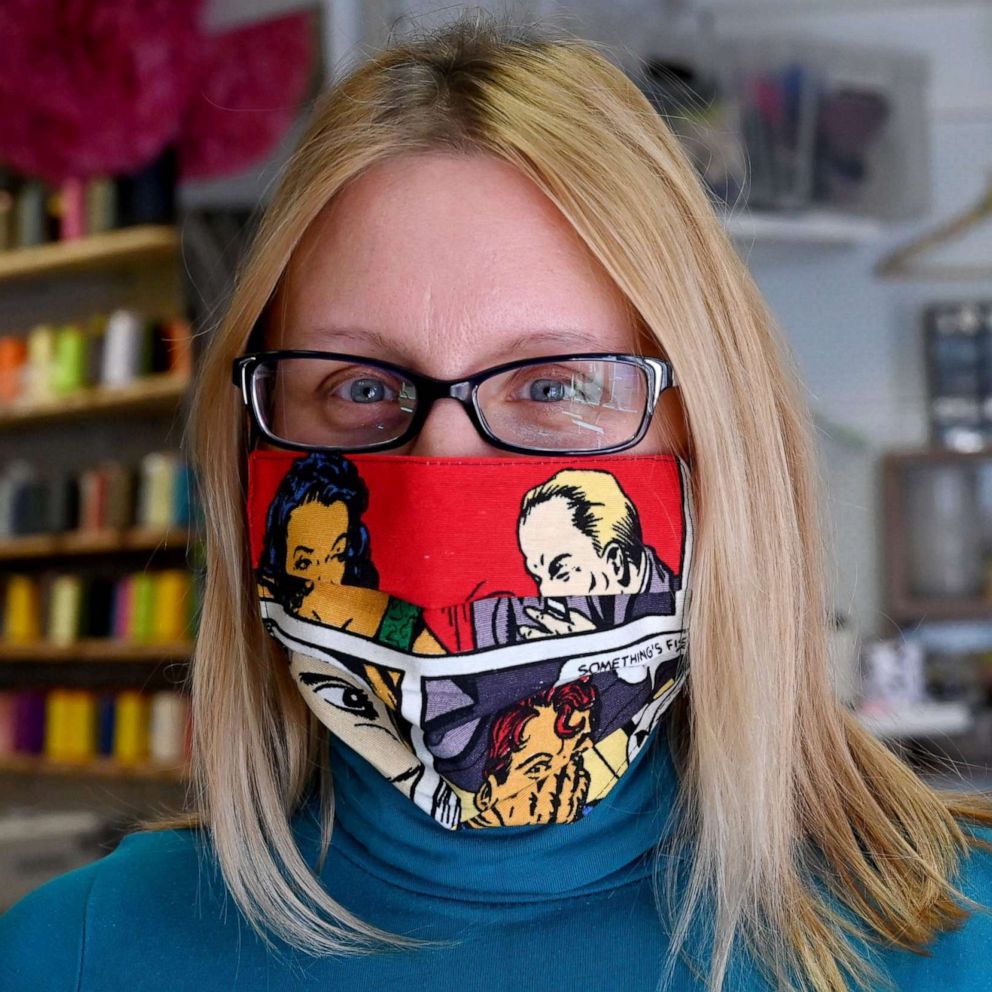Trump resists a nationwide stay-at-home order. Fauci says 'I don't understand why' some states not acting
President Donald Trump on Friday was facing new pressure from the nation's top infectious disease expert to call for a nationwide stay-at home order to keep the coronavirus from spreading and making the projected death toll even worse.
In his strongest comments yet, Dr. Anthony Fauci, who has become a prominent face in the fight against the pandemic, is now saying that he "doesn't understand" why every state isn't under a stay-at-home order -- a move Trump continues to resist, arguing those decisions should be left to the states.
"I don't understand why that's not happening," Fauci told CNN at a town hall Thursday night, when asked about some states having not issued stay-at-home orders. "The tension between federally-mandated versus states rights to do what they want is something I don't want to get into, but if you look at what's going on in this country I just don't understand why we're not doing that -- we really should be."
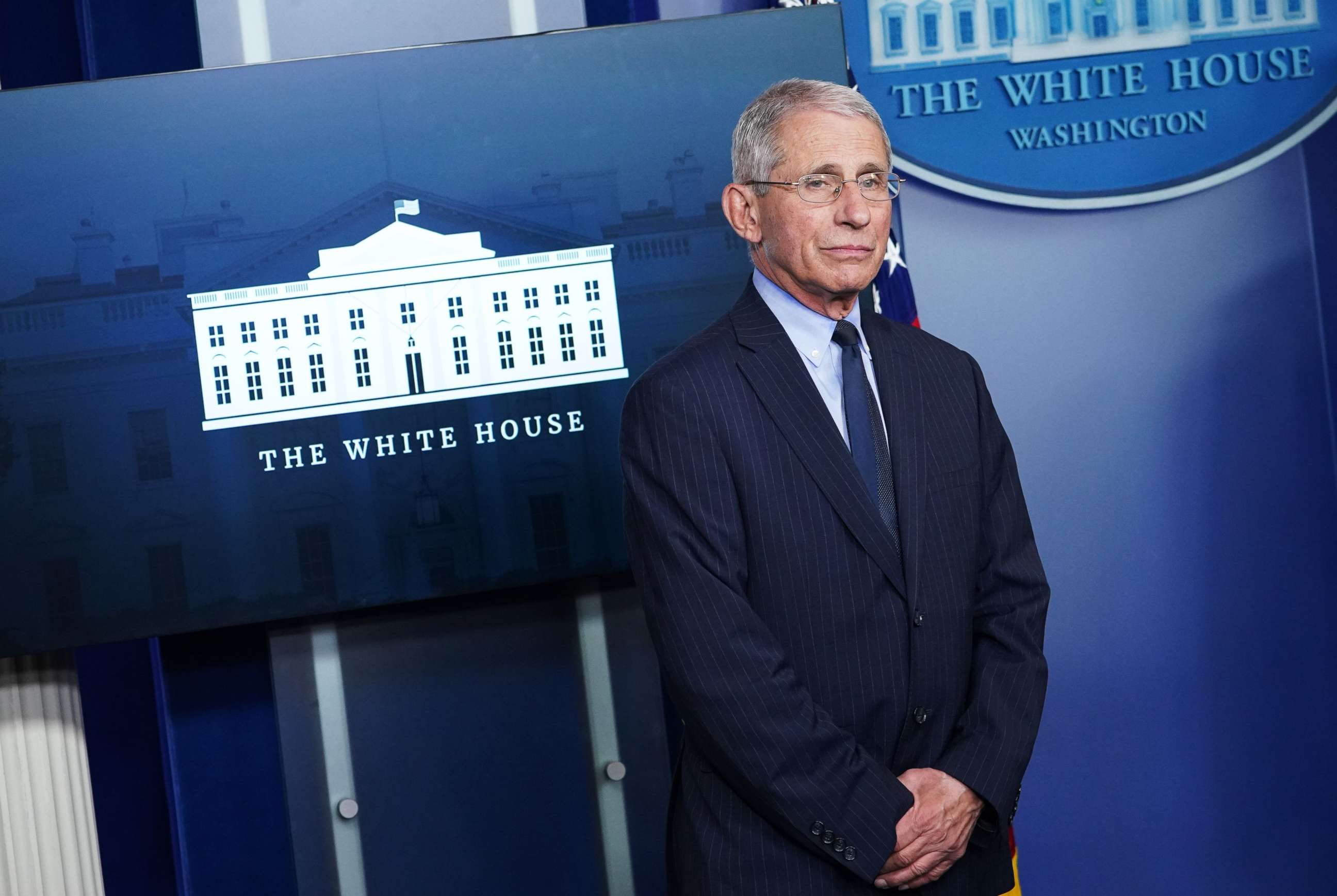
Tune into ABC at 1 p.m. ET and ABC News Live at 4 p.m. ET every weekday for special coverage of the novel coronavirus with the full ABC News team, including the latest news, context and analysis.
Trump has stuck to his view despite White House models revealing that 100,000 to 240,000 Americans will die from COVID-19 -- and that's assuming that the entire country implements strict social distancing measures.
Despite the advice of his top expert, the president on Wednesday said that "it's awfully tough to say 'close it down'" to states with fewer infections, adding that those states should be given "a little bit of flexibility."
Yet at Thursday's White House crisis briefing, as the number of U.S. cases passed 236,000 and continues to climb, Trump admitted that a state can quickly go from "low and slow" to a "hot spot" for the virus, seeming to undermine his own argument that states with lower infections shouldn’t be under as strict of orders.
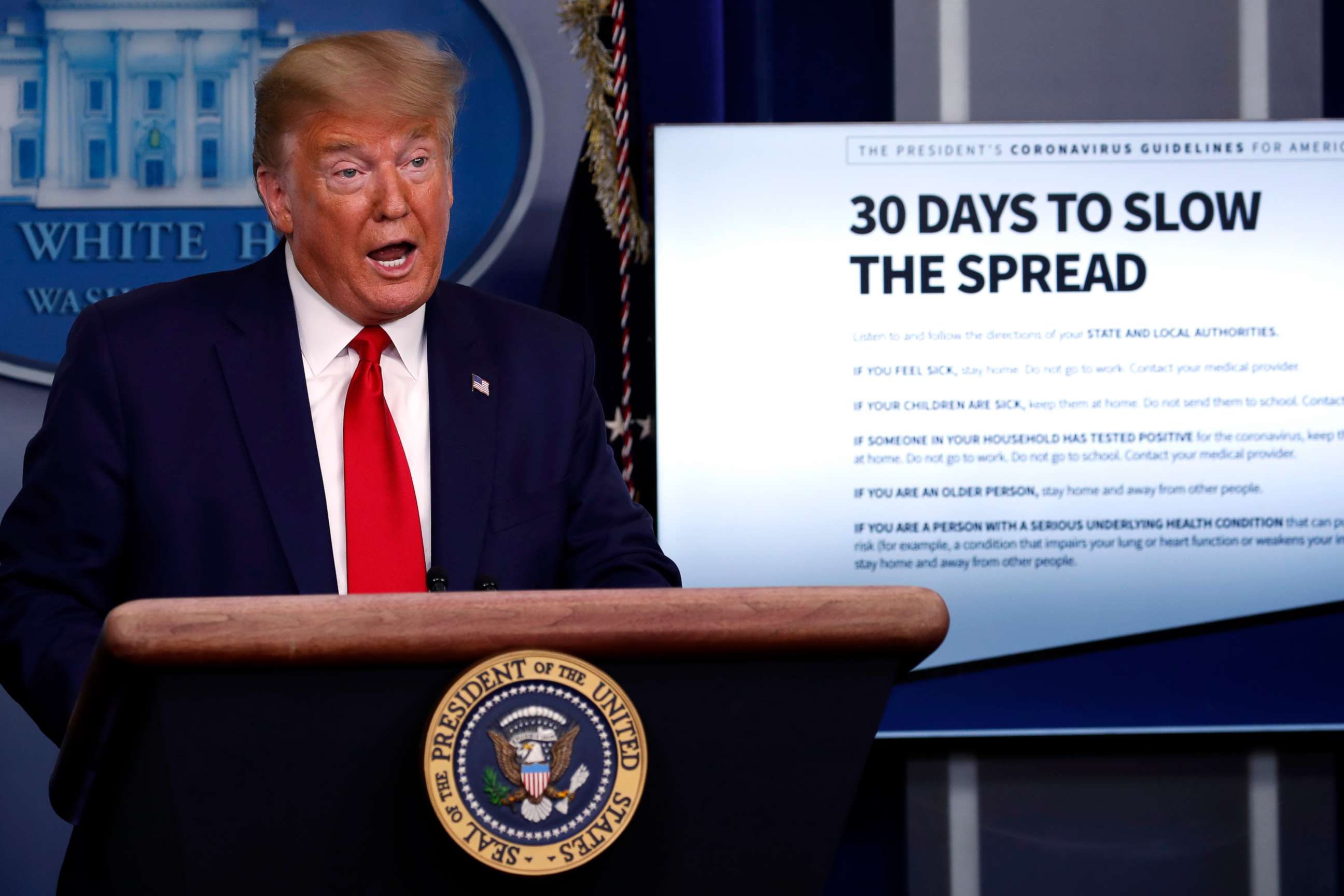
"Look, many states have started low and slow," Trump said. "Louisiana is an example. It was low and slow and they were looking great. I was watching it. Because, you know, it’s the kind of a place that people go to with Mardi Gras. Which sort of is an interesting point."
"Because after Mardi Gras, it was low. And then all of a sudden it went up very rapidly, and now it’s one of our true hotspots, right?," he continued."Certain areas of Michigan and Detroit. It looked like it was doing pretty good -- and then all of a sudden it went up."
John Cohen, former acting undersecretary at the Department of Homeland Security and an ABC News Contributor, echoed a warning from health officials: "If you have one state that is very strict about reducing social contact, and you have a neighboring state that isn't, then infected people can go back and forth and spread the virus."
Although orders around the country vary in strictness and duration, nearly 40 states, Washington, D.C., and Puerto Rico have issued stay-at-home orders to promote social distancing in an effort to combat COVID-19.
Florida became one of the latest states to join that group when, faced with heavy criticism for leaving beaches open to spring breakers, Gov. Ron DeSantis made the order Wednesday for Floridians to stay at home -- after speaking with President Trump.
"It is a very serious situation," DeSantis said of the virus, citing Trump's changed "demeanor" for his own response to issue a stay-at-home order this week. "When you see the President up there and his demeanor the last couple of days, that's not necessarily how he always is."
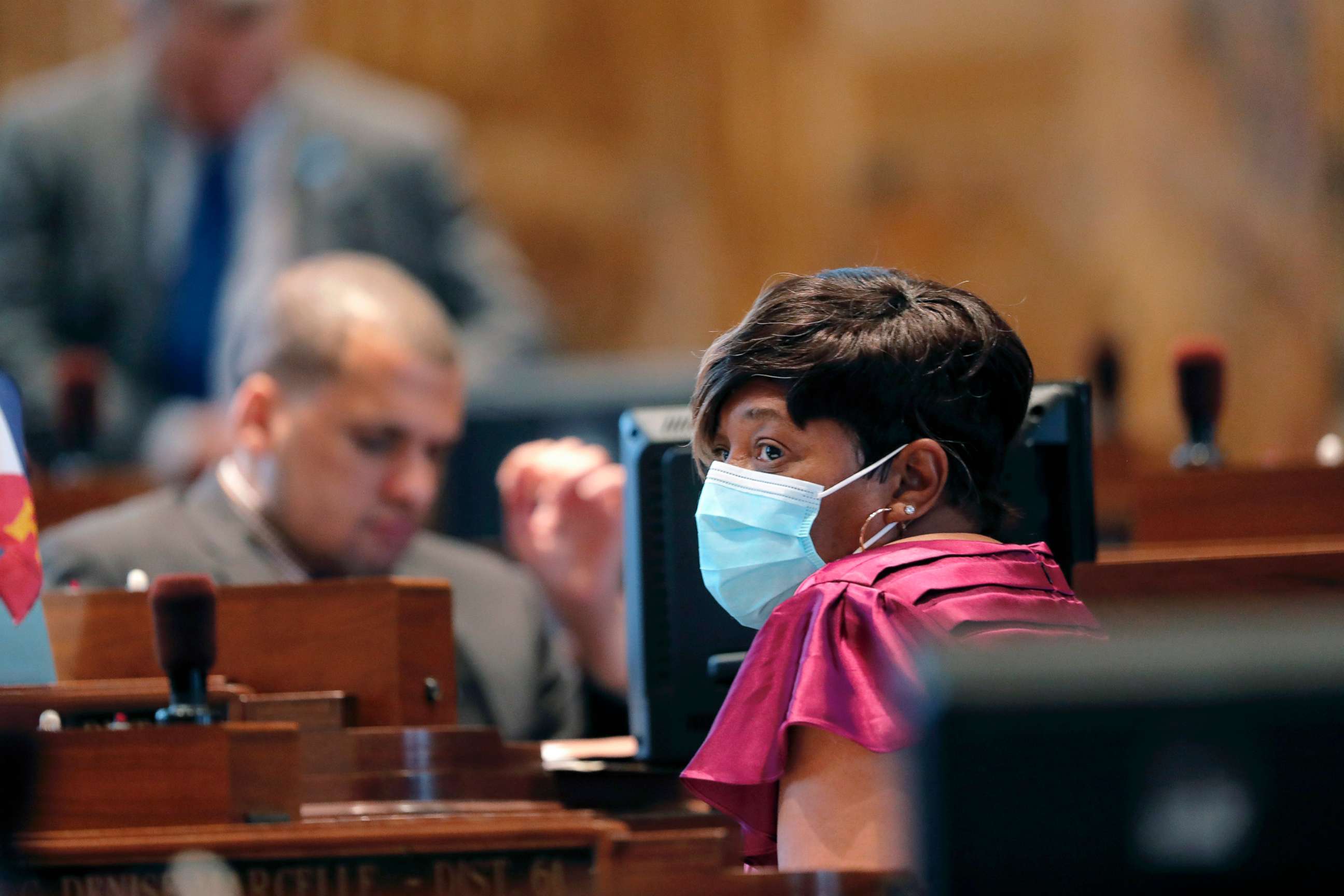
But a handful of states remain without any form of statewide closures of "nonessential" businesses or stay-at-home orders in place: Arkansas, Iowa, Nebraska, North Dakota and South Dakota
All five are overseen by Republican governors.
"If the president came out with a clear message that was consistent with what his own public health officials are saying, then you would see these governors respond in a different way," said Cohen, who has dealt in crisis management at a federal level.
Arkansas borders six states and sits directly above the surging cases in Louisiana, yet it's the only southern state that does not have a sweeping stay-at-home order.
Gov. Asa Hutchinson insisted Thursday he's not issuing one, instead opting for a "targeted approach," citing the potential for great economic fallout if businesses were forced to close.
It's an argument the president himself clung to last week when he said Americans wanted to "get back to work" and envisioned "packed churches" on Easter, before the White House unveiled its dire projections.
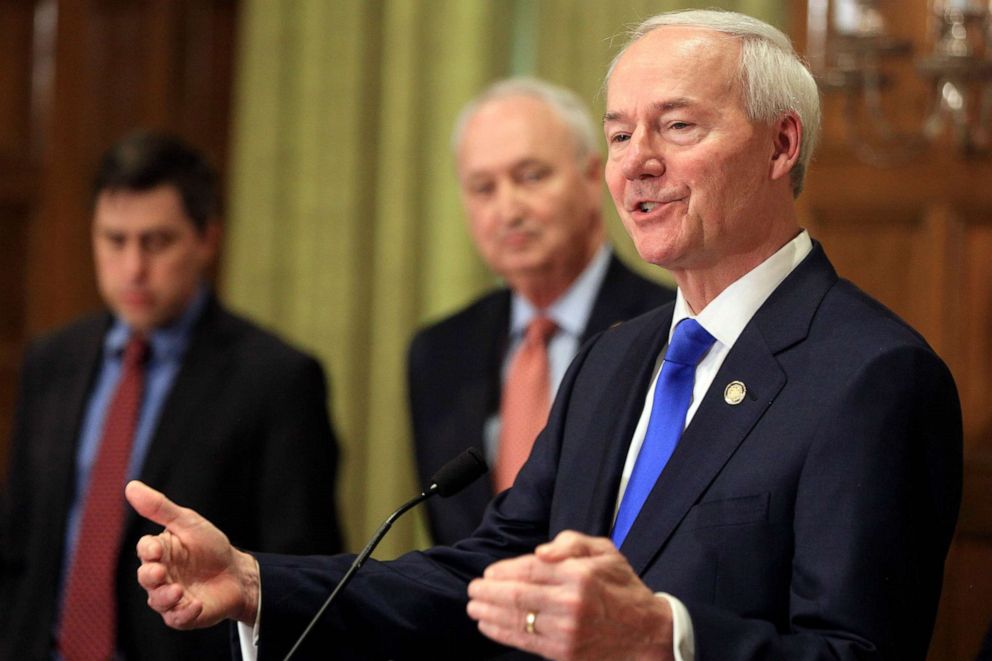
"You would also put a couple hundred thousand out of jobs," Hutchinson said in a press conference in Little Rock Thursday, as the number of cases in Arkansas had surpassed 600. "The question is: are you accomplishing anything by doing that order?... People are making their own decision to stay home."
Hutchinson, went on to say that the stay-at-home orders in other states are "in essence, an illusion to a true 'stay-at-home' order" since people can still go out to complete essential tasks.
However, California, the nation's largest state, has not seen the surge in COVID-19 cases that is beginning to overwhelm states like Louisiana and Michigan, suggesting that state and local lawmakers' early and restrictive shelter-in-place orders could be key to slowing the spread.
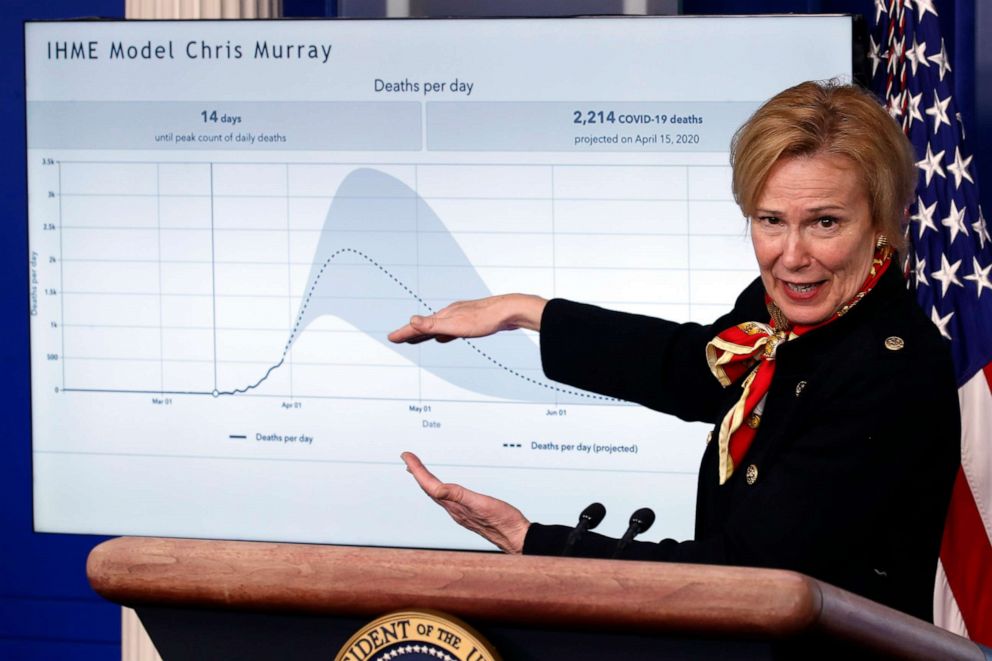
The current White House coronavirus guidelines -- which all five governors from the last standing states have pointed to -- have advised Americans since March 16 to "work or engage in schooling from home whenever possible" through April, to "avoid discretionary travel, shopping trips, and social visits," and "gatherings in groups of more than 10 people."
But Dr. Deborah Birx, the coronavirus task force coordinator, said at Thursday's briefing that early data is revealing that social distancing is still not being followed stringently -- at least in some areas.
"We're watching very carefully because we can see that you can go from this to this very quickly," Birx said, pointing a steep slope on a graph. "This should not be happening any longer in new places, if people are doing the social distancing, washing their hands, not getting together in large groups."
"When we said that, now over 16 days ago, that was serious," she said of the coronavirus guidelines. "And you can see the number of individuals who have been infected since then. The people we're seeing infected today and in hospitals today were infected after the guidelines went out."
This is why Cohen says that it's "so important, particularly at this stage, when we're seeing the number of cases increase dramatically on a daily basis, that every state take consistent action."
"This is a national crisis, and it requires a cohesive national plan," Cohen added, "and up to this point, the response to this crisis has been one that's been led by state and local officials."
What to know about coronavirus:
- How it started and how to protect yourself: coronavirus explained
- What to do if you have symptoms: coronavirus symptoms
- Tracking the spread in the US and Worldwide: coronavirus map
ABC News' Kyra Phillips, Katherine Faulders, Jordyn Phelps and Ben Gittleson contributed to this report.
